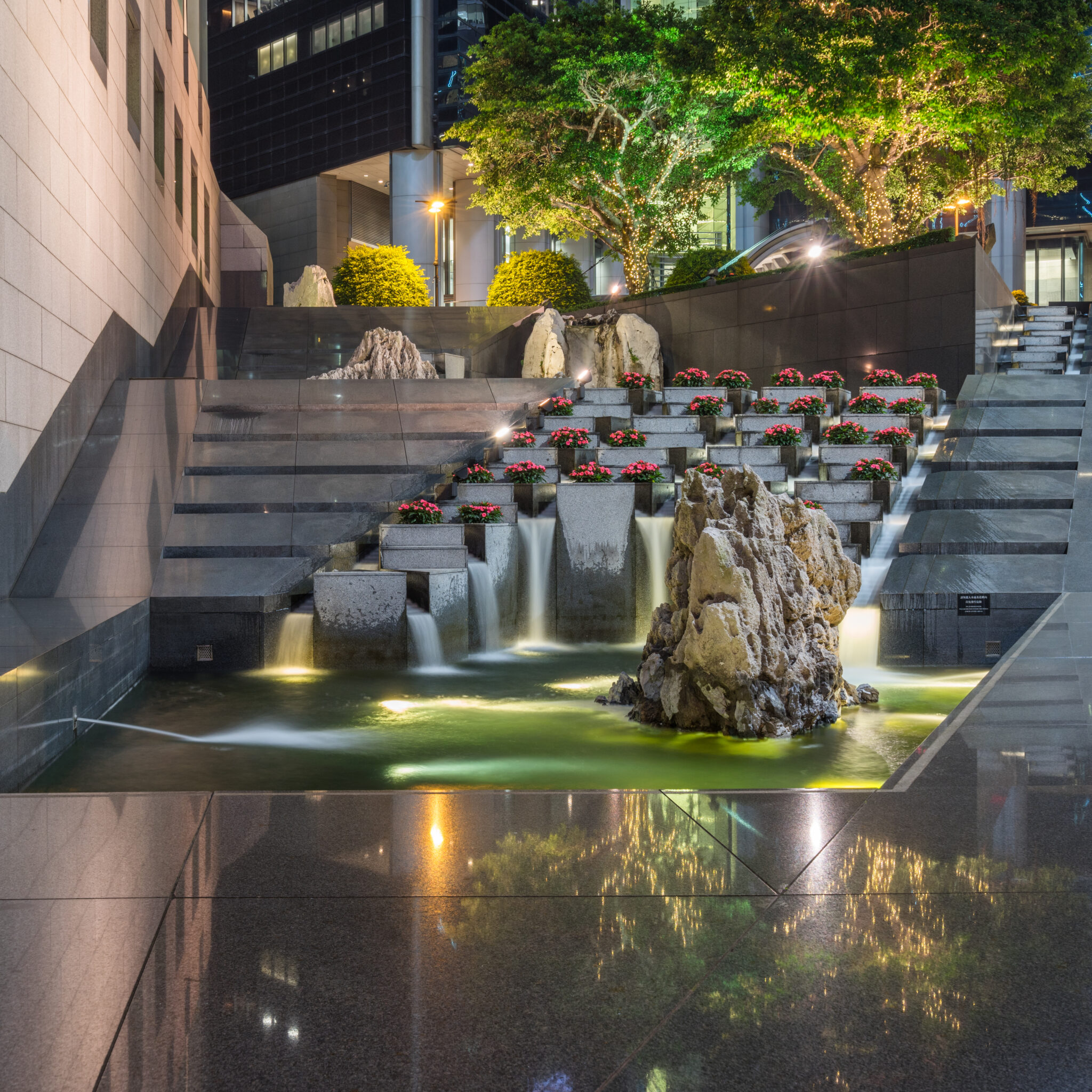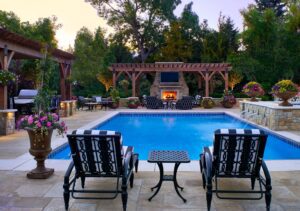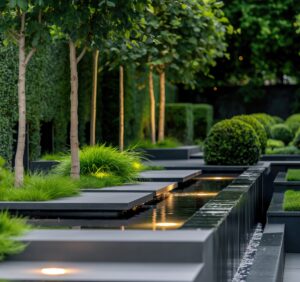Landscaping is more than just planting flowers or mowing the lawn—it’s about transforming outdoor spaces into beautiful, functional, and valuable areas. Whether you’re a homeowner looking to enhance curb appeal or a business owner aiming to create inviting outdoor spaces, understanding what landscaping does is essential.
In this guide, we’ll explore the many roles of landscaping, its benefits for residential and commercial properties, and how it contributes to aesthetics, functionality, and property value.
The Purpose of Landscaping
1. Enhancing Aesthetic Appeal
Landscaping plays an important role in improving the visual appeal of any property. A well-designed landscape creates a harmonious blend of natural elements like plants and trees with man-made features such as patios and pathways.
For homeowners, landscaping enhances curb appeal, making your property stand out in the neighborhood. For businesses, it creates a welcoming environment that leaves a lasting impression on clients and visitors.
2. Increasing Functionality
Landscaping isn’t just about looks—it’s also about making outdoor spaces more functional. Thoughtful designs can create areas for relaxation, entertainment, or work while addressing practical needs like drainage or privacy. Features like patios, retaining walls, and walkways improve usability while adding structure to your outdoor space.
Benefits of Landscaping
1. Boosting Property Value
One of the most significant benefits of landscaping is its impact on property value. Studies show that well-landscaped homes can sell for up to 15% more than properties with minimal or no landscaping.
Features like lush lawns, mature trees, and hardscaping elements like patios contribute to this increase. And for commercial properties, landscaping enhances curb appeal and attracts more customers by creating inviting outdoor spaces that reflect professionalism and care.
2. Improving Energy Efficiency
Strategic landscaping can help reduce energy costs by providing natural insulation and shade. For instance, trees planted near windows block sunlight during the summer, which reduces cooling costs.
Additionally, shrubs around the foundation offer insulation during the winter months, further enhancing energy efficiency. These eco-friendly solutions not only save money but also contribute to environmental sustainability.
3. Promoting Mental and Physical Well-Being
Spending time in landscaped environments has been shown to reduce stress and improve mental health. Green spaces encourage outdoor activities like gardening or exercising, promoting physical well-being as well as relaxation.
Types of Landscaping
1. Softscaping
Softscaping refers to the living elements of landscaping—plants, trees, shrubs, flowers, grass, etc. These elements add color, texture, and life to your outdoor space while improving air quality and biodiversity. Examples include:
- planting flower beds for seasonal color;
- adding native plants for low-maintenance beauty;
- installing hedges or shrubs for privacy.
Softscaping enhances outdoor spaces with vibrant plants and trees, improving aesthetics, air quality, and biodiversity while providing low-maintenance beauty and privacy.
2. Hardscaping
Hardscaping involves non-living elements such as stone pathways, patios, retaining walls, swimming pools, or water features that add structure and functionality to your landscape. Examples include:
- Building a patio for outdoor dining.
- Installing walkways to connect different areas of your yard.
- Adding retaining walls to prevent soil erosion.
Hardscaping enhances your landscape by providing essential structure and functionality. The goal : create inviting spaces for relaxation, entertainment, and improved accessibility throughout your outdoor area.
How Landscaping Impacts Different Properties
1. Residential Properties
For homeowners, landscaping transforms front yards into beautiful extensions of their living space. Features like gardens, lawns, and decks create areas for relaxation or family gatherings while boosting curb appeal. A well-maintained landscape also increases home value—a key consideration if you’re planning to sell your property in the future.
2. Commercial Properties
For businesses, landscaping serves as an extension of branding and customer experience. A professionally landscaped exterior conveys attention to detail and professionalism while creating a welcoming atmosphere for clients or employees. Examples include:
- installing flower beds near entrances;
- creating seating areas with shade trees for employee breaks;
- adding lighting along pathways for safety during evening hours.
Landscaping enhances commercial properties by reinforcing brand identity and creating a welcoming atmosphere for clients and employees.
Common Landscaping Projects
1. Lawn Care
A healthy lawn is often the foundation of any landscape design. Therefore, regular mowing, fertilizing, and aeration keep grass lush and green. In addition, preventing weeds is essential. Moreover, proper watering promotes growth. Finally, choosing suitable varieties enhances resilience.
2. Garden Design
Gardens add beauty through flowers or edible plants like vegetables or herbs:
- flower gardens enhance aesthetics with seasonal blooms;
- vegetable gardens promote sustainability by providing fresh produce.
Garden design enriches outdoor spaces by combining beauty and functionality, creating vibrant environments that support both aesthetics and sustainable living.
3. Outdoor Living Spaces
Patios or decks extend indoor living outdoors:
- patios offer spaces for dining or entertaining guests;
- fire pits create cozy gathering spots during cooler months.
Outdoor living spaces boost the home by seamlessly connecting indoor and outdoor environments. It provides inviting areas for dining, entertaining, and relaxation year-round.
Tips for Effective Landscaping
1. Plan Ahead
Start with a clear vision of what you want your landscape to achieve—whether it’s improving aesthetics or adding functionality. Identify key features, set a realistic budget, consider maintenance needs, and consult professionals for expert guidance and design ideas.
2. Choose Native Plants
Native plants are better suited to local climates and require less maintenance than exotic species. They conserve water, reduce chemical use, and support local wildlife habitats. Additionally, they promote biodiversity and enhance the overall resilience of the ecosystem.
3. Balance Softscaping & Hardscaping
A mix of greenery (softscaping) with structural elements (hardscaping) ensures both beauty and practicality in your design. This combination creates inviting spaces, improves drainage, reduces erosion, and enhances overall functionality while providing diverse habitats for wildlife.
Frequently Asked Questions (FAQ)
1. What is the main purpose of landscaping?
Landscaping enhances both the aesthetic appeal and functionality of outdoor spaces while increasing property value.
2. How does landscaping improve home value?
Well-maintained landscapes boost curb appeal and can increase home value by up to 15%, making properties more attractive to buyers.
3. What are examples of hardscaping?
Hardscaping includes patios, walkways, retaining walls, water features like fountains or ponds—all non-living elements that add structure to landscapes.
4. Is professional landscaping worth it?
Yes! Professional landscapers bring expertise in design and installation that ensures long-lasting results while saving time compared to DIY efforts.
5. How often should I maintain my landscape?
Regular maintenance such as mowing lawns weekly or pruning shrubs seasonally keeps landscapes healthy year-round.
6. Can landscaping reduce energy costs?
Strategically placed trees/shrubs provide shade/insulation—reducing cooling/heating costs significantly over time!
7. What’s the difference between softscaping & hardscaping?
Softscaping involves living elements (plants/grass), whereas hardscaping focuses on structures (patios/walls).
Landscaping is an investment in both beauty & functionality. It transforms your outdoor spaces into valuable assets tailored perfectly toward enhancing property aesthetics and usability alike!




